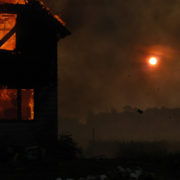Don’t Lose Your Head in a Crisis. How to Make an Insurance Claim After a Disaster
On the heels of a disastrous incident, you should make an insurance claim as soon as possible. Follow these steps to help you collect as quickly and easily as possible and get back on your feet.
Unfortunately, at some point, and for one reason or another, we’ll likely all have to make an insurance claim. Your home may have been damaged by fire or flood, a tree may fall on your garage, you may have been the victim of vandals or burglary.
No matter what has happened, the compensation you receive for your loss will depend on the kind of insurance coverage you have purchased. Fortunately, in addition to your claim amount for destroyed or damaged property, you might even be able to receive funds to help with living expenses if you’re temporarily displaced.
Steps to follow to submit an insurance claim:
You MUST contact your insurance agent as soon as you can after the incident. Night or day, make the call to your insurance broker. Most providers have 24-hour claims service.
The devil is most definitely in the details – have them on hand. Be prepared to offer as much information as possible about the damage and the circumstances of the event. Don’t be afraid to include photos and/or video if you have it (only if it’s safe to acquire, of course).
Ask about additional living expenses. If your home is not safe to live in, ask your insurance agent about any expenses you might be entitled to and for how long. From the time of your loss, make a point of collecting all invoices and receipts for any living expenses.
A visit from a claims adjuster or specialist. Understand that your insurance company will hire a claims adjuster or specialist to investigate the circumstances of the event and the loss. They’ll examine any documentation and explain your next steps. They will likely also:
- Determine the facts and details regarding the claim as well as the extent of what will be covered by your insurance policy.
- Attempt to reach an agreement with any other individuals involved, losses they may have incurred, and the extent of their responsibility.
Proof of Loss form. After the incident, you’ll be asked by your insurance agent to complete and return a Proof of Loss form. It will list the property and/or items that were damaged or lost, as well as their estimated cost or value. The form will ask you to:
- Make a complete list of all damaged, destroyed or stolen items. Attach proofs of purchase, receipts, police reports, owner’s manuals, and warranties, if possible.
- Attach any photos of damaged items. Unless they are dangerous or pose a health hazard, keep damaged items. An up-to-date home inventory will help if you experience a loss.
- Sign and swear that statements you make in the proof of loss are true.
- VERY IMPORTANT: If any of the statements you make on the form are not true, your insurance and claim may be considered void.
Review your policy. Review and familiarize yourself with any deductibles, coverage limits, and replacement values.
- If you make a claim, the amount you receive will depend on the kind of coverage you own.
- Insurance companies have a few options regarding your damaged or stolen items:
- Repair
- Replace
- Reimburse
- Your policy will require you to take all the necessary steps to limit further damage.
Hiring contractor(s). Ask your insurance agent if you’re free to hire a contractor or supplier of your choosing. If you can, be sure to discuss the costs. Make sure the contractor or supplier you choose stays true to the price, quotes, details, and specifications that you and your insurance representative have agreed upon.

